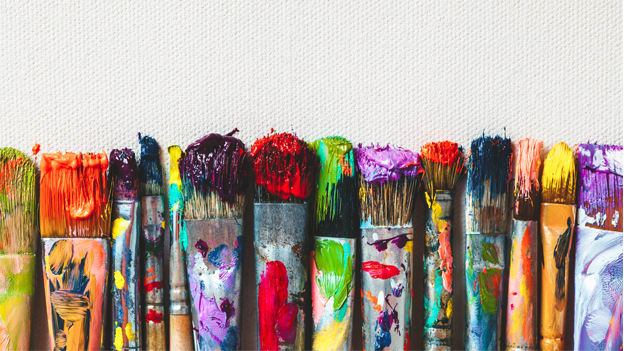Use all your senses to make sense

Engaged employees can deliver despite a chaotic environment, provided they are enabled. Selected art workouts can awaken the inspiration and ability to read antecedent weak signals, like the ones that precede looming opportunities, as well as threats.
Discomfort with chaos breeds complacency. This dissuades people from perceiving weak signals. Take Mattel, owner of the Barbie doll. Mattel's doll had reigned uncontested over a span of four decades, only to lose a fifth of its market to MGA´s Bratz in the first four years of this century. The Bratz doll was better attuned to the pop esthetics of the artists that the new generation of young girls idolized, a shift in tastes which Mattel had missed.
Many large players in the financial industry, Lehman Brothers included, failed to see the combined risk of financial derivatives and the housing bubble that led to the banking crisis of 2008. Yet, hedge fund manager John Paulson made 15 billion dollars shorting subprime mortgage-backed loans in 2007.
Why do some see it coming and others do not? It all depends on how you free and articulate your senses to perceive.
The poet William Auden believed the ear searched for rhythm while the roving eye pried on the difference. There is complacency in the ear´s search for rhythm, and there is ecstasy in the eye’s search for change. Perhaps this is why so many well-heeled western patrons enjoy visiting art galleries to see contemporary art though they mostly prize Mozart when attending concerts, despite the two and a half centuries between the two!
Looking with your ears and listening with our eyes can only blindfold you to weak signals, precisely the ones you need to perceive early. To detect weak signals you would do better by listening to unconventional people, these are the ones who rarely come out of business schools; they tend to gravitate towards the arts. Bringing corporations closer to the arts will help organizations to become better attuned and more responsive to change. However, it will take some rebalancing. The arts are a different body of knowledge, with its own purpose, liturgies, and language. That is why many curatorial texts at exhibitions sound so opaque to outsiders. The dialogue between the arts and the corporate world will not be easy. Rather than redirecting corporations to the arts, exposing corporate people to the business-oriented interpretation of selected artworks should offer a path of least resistance.
The choice of artworks and the pace to introduce them to business persons is an art in appealing to the mind through the senses. The luring must be done gradually, all senses in an alert mode while offering something the target might understand or feel attracted to. For example, much of the conceptual art that flourished in the West since the sixties is unlikely to help in easily awakening fruitful conversations with corporate people.
To entice art-based discussions among business people in the Wes,t I have organized business interpretations on meaningful artworks that are easier to apprehend, like those shown in “I’m Your Mirror” by Joana Vasconcelos. This much-lauded touring exhibition was held during 2018 at Bilbao’s Guggenheim, next at Porto´s Serralves and, during the second semester of 2019, at Rotterdam´s Kunsthal. It is a large, rich and diverse exhibition decrying consumerism and the feminine subordinate status: it does so in a cerebral though humorous, exuberant and seductive way.
Here I will only refer to one artwork, which incidentally gives the name to the exhibition: a large Venetian Carnival-like mask made of mirrors on both sides. That mask allowed me to trigger discussions among executives over powerful questions around the purpose and frequency of deception and seduction at the workplace, even on the proclivity to self-deception. It helped me discuss with executives the ease with which people lie on their CVs, or how they gleefully take part in corporate masquerades, drawing on the James’ monologue in Shakespeare’s As you like it: “Life is a Theater”. Powerful questions around artworks, like Vasconcelos’ mirrored mask, can facilitate discussions on organizational purpose and behavior, on performance evaluations, promotions, leadership and more, while also bringing the corporate environment closer to the arts.
Once the business-mind is softened to the arts, it should prove easier to reorient corporations to adopt more art-based management, helping develop the sensitivity to perceive and interpreting weak signals, as the current business environment requires.
















